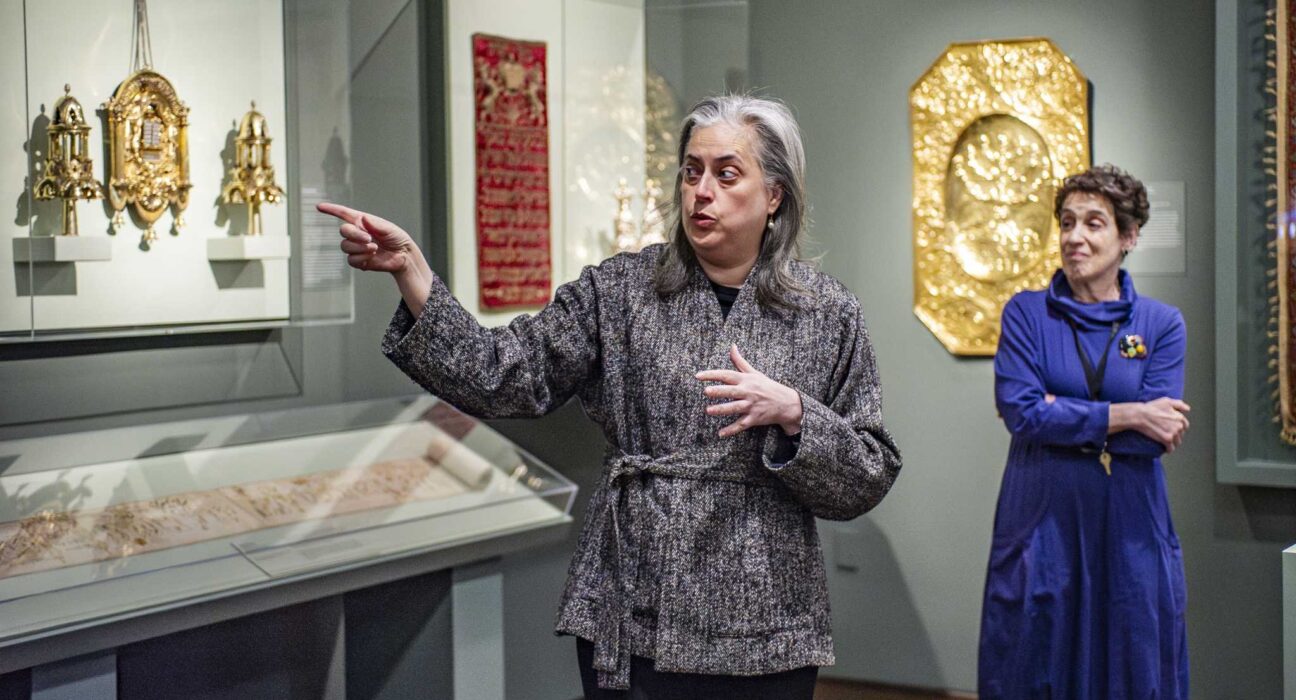The journey to a permanent collection of art works made for Jewish communities at Museum of Fine Arts, Houston began in 2018, with a prayer book. “The Montefiore Mainz Mahzor Mainz” (c. 1310-20), a rare, illuminated Jewish manuscript, became MFAH’s second piece of Judaica amidst the museum’s roughly 60,000 works and objects.
“The big question was, ‘Why don’t we have more?'” said MFAH Director Gary Tinterow on Thursday.
The answer, the Albert and Ethel Herzstein Gallery for Judaica, opens Dec. 3 inside the Caroline Wiess Law Building. Gray and intimate, the jewel box completes a suite of galleries dedicated to Houston’s diverse communities as part of MFAH’s World Faith Initiative. Adjacent spaces are devoted to art from Korea, Japan, India, China and Islamic worlds.
Advertisement
Article continues below this ad
“The World Faith Initiative brings recognition and consciousness to the religious qualities,” Tinterow said. “Their symbolic, religious or spiritual function are in concert with their beauty, creation and fabrication.”
Last summer, “Beauty and Ritual: Judaica from the Jewish Museum” introduced Houston audiences to Judaica and ongoing partnership between the two fine art institutions. There are two dozen works on view in the Herzstein Gallery, including several loans from the Jewish Museum in New York. Over the past three years, MFAH has amassed some 30 objects; some were acquired at auctions.
Unlike Christian or Muslim art, Judaica is extremely rare, Tinterow explained. Jewish communities faced frequent round of oppression, forced migration, and the Holocaust. Significant volumes of art were lost.
Advertisement
Article continues below this ad
Albert and Ethel Herzstein Gallery for Judaica
When: Now exhibiting
Where: Museum of Fine Arts, Houston, Audrey Jones Beck Building, 5601 Main
Details: All access tickets, $20 and up; mfah.org, 713-639-7300
This posed another question for Christine Gervais, Fredricka Crain Director of Rienzi and MFAH decorative arts curator: “Where have these communities landed as they moved?”
The Herzstein Gallery answers that, too.
A counter-clockwise tour begins with a video showcasing synagogues from around the world. “People stand transfixed for the full 9 minutes,” Gervais said.
Because Jewish artists were forbidden to join guilds across Europe, many works are attributed to Christian artisans. “Torah Crown” (mid-18th century) crafted in Venice draws attention to the year 1509, when Jews were first allowed to settle within the Italian city until 1516, when a Venetian Senate mandated they be sequestered to a former foundry turned ghetto. “We don’t know if a Jew worked on this (piece) because they weren’t allowed in silver-making workshops,” said Beth Schneider, consultant and former MFAH education director.
Advertisement
Article continues below this ad
Objects along the far left wall are grouped geographically. “Synagogue Lamp” (1891) hangs near the far right corner. The silver and colored-stones metalwork by Dublin firm John Smyth & Sons bears a Hebrew dedication around its exterior to commemorate a temple forced to close 100 years prior, in 1792.
“This object is letting us know how people lived,” Gervais said.
The far right wall highlights rituals surrounding Jewish holidays such as Hanukkah and Passover. It’s also where visitors will find “The Montefiore Mainz Mahzor Mainz.”
“It looks like the European Jewish community because it has been beaten up,” Tinterow said. “There are traces of survival, commissions of local artists, and beauty. We will be turning its pages throughout the year.”
Advertisement
Article continues below this ad

